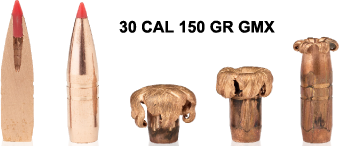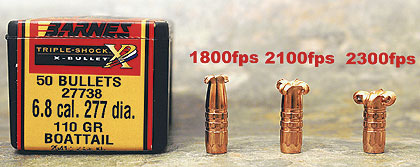A significant International Symposium was organized in Brussels on 20 October 2015 by the Association ofEuropean Manufacturers of Sporting Ammunition (AFEMS) and the World Forum on Shooting Activities(WFSA).The Symposium focused on the sustainable use of lead in ammunition and its impact on both theenvironment and human health. The Symposium also provided an overview of the ballistic features of bothlead and non-lead ammunition and assessed the current legislation at the European and International level.Background informationLead is present naturally in a variety of forms, but only metallic lead is used in sport shooting and huntingammunition.The use of lead metal is highly sustainable because it can be recycled an infinite number of times and theavailable technologies make the process economically advantageous. It has been used in the ammunitionindustry for centuries because it possesses excellent ballistic features and is highly cost effective. No othermaterial can guarantee the same results in terms of performance and sustainability.The use of lead in ammunition is already highly regulated and its proper management minimizes thepossible negative impacts on environment and health. Several scientific studies and research papers showthat metallic lead in ammunition has no significant impact on human health and the environment ascompared to other forms of lead. For example, lead fragments in game meat, if ingested, cannot bedirectly absorbed by the human body because they are in metallic form. By comparison, food consumed inlarger quantities and by the general population, such as cereals, dairy products, vegetables and tap water,have the greatest impact on human dietary exposure to lead. Moreover lead shot and projectiles used inboth indoor and outdoor shooting ranges are regularly collected and recycled.Restrictions in the use of lead in ammunition would inevitably damage both hunting, a necessaryprerequisite in game management as well as a traditional cultural practice, and sport shooting, a highlydisciplined activity which increasingly involves young people and women.
The symposium was attended by 110 delegates, including journalists, politicians, scientists, members ofenvironmental institutions, hunting and sport shooting organizations and food agencies.Three influential keynotes speakers from the European Parliament and the European Commissiondescribed the current position and future strategies of the European regulatory bodies, thus giving furthersignificance to the event.
Sixteen speakers covered every conceivable aspect of lead in civilian ammunition, with presentationsorganized into five different panels: environment, legal issues, ballistics, human health and other issues.Three expert journalists managed the lively and animated debates which followed the presentations as wellas sharing their own assessment of the issues.The Symposium opened with a welcome address from Mr Torbjörn Lindskog (AFEMS President) whowelcomed participants and introduced the first keynote speaker, Ms Natalie Pauwels (DG ENVI), whopresented the EU Environment Policy priorities over the coming years. The afternoon session was openedby Mr Herbert Keusgen (WFSA President) followed by a keynote address from Ms Renata Briano (VicePresident of the EU Parliamentary Intergroup “Biodiversity, Hunting and Countryside”).Panel 1: Environment (Speakers: Patterson – Verdonck – Göttlein; Moderator: James Crisp)Mr Rick Patterson (SAAMI Executive Director) spoke about the California Condor whose blood lead levelsand population number did not change despite the introduction in 2008 of a ban on lead huntingammunition and 99% compliance with the ban.Mr Frederik Verdonck (ARCHE Consultant) presented the results of experiments which were carried out todemonstrate the magnitude of the effects of lead shot ingestion on population size, growth, and extinctionof upland avian species that ingest these substances. The results suggested that lead shot can causepoisoning of individual birds but they have no significant impact on population level.Mr Axel Gottlein (Professor for Forest Nutrition and Water Resources at the Technische Universität ofMünchen) presented the results of a comparative assessment of the environmental impacts of differenttypes of bullets.
....In his presentation, Mr Klaus-Hinnerk Baasch (Doctor, Toxicology) explained that, despite several concernsabout human health and wildlife, lead contained in ammunition has no relevance to consumer protection,species protection or the environment.Mr Christer Holmgren (Senior Advisor at SEPA) presented the methodology and results of his recent study,‘Lead in Game Meat’, which showed that only 1-2% of present lead metal fragments are converted tobioaccessible forms in the human gastrointestinal tract.Mr Pier Mannucci Mannucci (Scientific Director at the Policlinico Hospital Foundation of Milan) reviewedthe case-control study of the Swiss Public Health Office, showing that there is no risk of a significantincrease in the body burden of lead for the average consumer of wild game hunted using lead ammunition.A similar case control study is now being conducted in Italy.Mr Holger Von Stetten (Doctor, Internal Medicine) stressed once again that banning lead huntingammunition does not reduce the lead pollution of the total population. Human dietary exposure to leadamong consumers occurs largely through the most commonly eaten foods and only in a very small partthrough game.




 Reply With Quote
Reply With Quote










